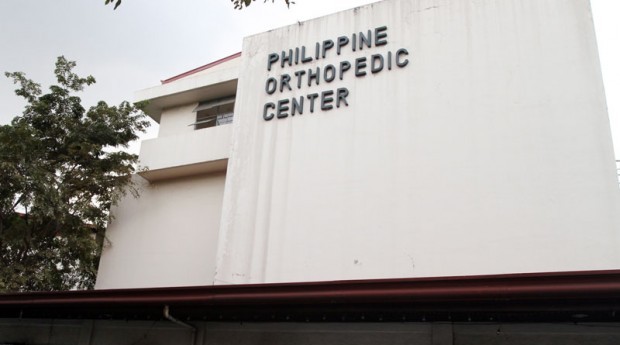MANILA, Philippines–Paraplegic Venerando Acabal wriggles on a rust-eaten bed to soothe painful bed sores, in misery but also fearful that privatization plans for the Philippines’ only bone hospital will rob him of his refuge.
The state-run Philippine Orthopedic Center, a cramped and dizzying maze of rickety stretchers that spill out of humid wards into dingy hallways, has treated tens of thousands of patients for free since it opened in 1945.
But the public hospital is slated to close after a private firm last year won a contract to replace it with an expanded new facility, part of a multibillion-peso privatization program by the Aquino administration.
“If they kick me out of here, I have no choice but to go home and die in my house,” said Acabal, a 55-year-old carpenter who has been bedridden at the hospital since breaking his back in a construction site accident four years ago.
Despite wretched appearances, the hospital is much-loved by the poor as they can turn up, have complicated operations and stay for years even if they do not have any money.
Of the nearly 7,000 patients treated last year, only 2 percent paid their bills in full, according to hospital records, and the facility’s chief is worried the charity will be severely curbed under private management.
“It’s difficult to reconcile profitability and service to the poor,” said the hospital director, Jose Brittanio Pujalte. “Our patients here are the poorest of the poor and they have nowhere else to go.”
The private operator, Megawide-World Citi, has a contract to run the hospital for 25 years from mid-2016 before having to hand it back to the government.
Underfunded
The company did not return requests from Agence France-Presse (AFP) seeking comment about how it would balance its need to make a return on its investment with the needs of the poor.
When asked about the issue, the head of the Philippines’ privatization office, Cosette Canilao, said the new operators were contractually obliged to only charge full rates to 10 percent of patients.
But Canilao could not provide details on whether the remaining 90 percent would still be required to make some payments.
She emphasized that privatization was necessary to help upgrade the Philippines’ woefully underfunded health system.
“There is an urgent need for us to improve the health services for the public and one way of doing that is to take private partners,” said Canilao, executive director of the Private-Public Partnership Center.
The government spends half the global average on health as a percentage of gross domestic product, according to the World Health Organization.
The country’s largest mental institution and a major hospital that serves provinces regularly hit by typhoons are also set to be privatized.
Miserable refuge
The hospital is undeniably in need of extra funds.
Acabal shares a squalid ward with no air conditioning with seven other men, all bare-chested to ease the discomfort from the summer heat.
“I’m in pain all day from bed sores on my back. I go to sleep, wake up, and that wall is all I see,” the carpenter said, gasping for air, and with a faint whistle from an exposed breathing tube protruding from his throat.
A far corner of the hallway has been transformed into a ward with rusty stretchers. On an adjacent ward, a boy with a metal brace on his leg wails in pain.
A bunch of rosaries and dried flower garlands hang from a life-size statue of Jesus Christ, which serves as a prayer sanctuary.
Relatives watch over their loved ones, sprawled on the grimy concrete floor half-covered with chipped vinyl tiles. Some spend the night on cardboard laid out on the pavement outside the hospital building.
Chaotic
At the emergency room entrance, there is a chaotic but steady stream of patients arriving in wheelchairs and ambulances.
Still, a 40-year-old former security guard, Randy Gonzaga, who is paralyzed from the waist down due to a tumor on his spine, does not want to be anywhere else.
The father of 5-year-old twin girls survived Supertyphoon “Yolanda” (international name: Haiyan) in his home province of Leyte in 2013 but discovered he had a tumor on his spine that same year.
Gonzaga is selling purses made by his wife from his hospital bed to raise P60,000 for a titanium implant that is required before surgery to remove the tumor.
The hospital cannot afford the implant but it can provide the surgery, which could cost up to P200,000, for free.
“I hope to have my tumor removed before the new owners come in. Otherwise, I have nowhere else to go,” he said.
RELATED STORIES
DoH: Hospitals must admit all emergency patients
Critically-ill child denied hospital entry, dies
